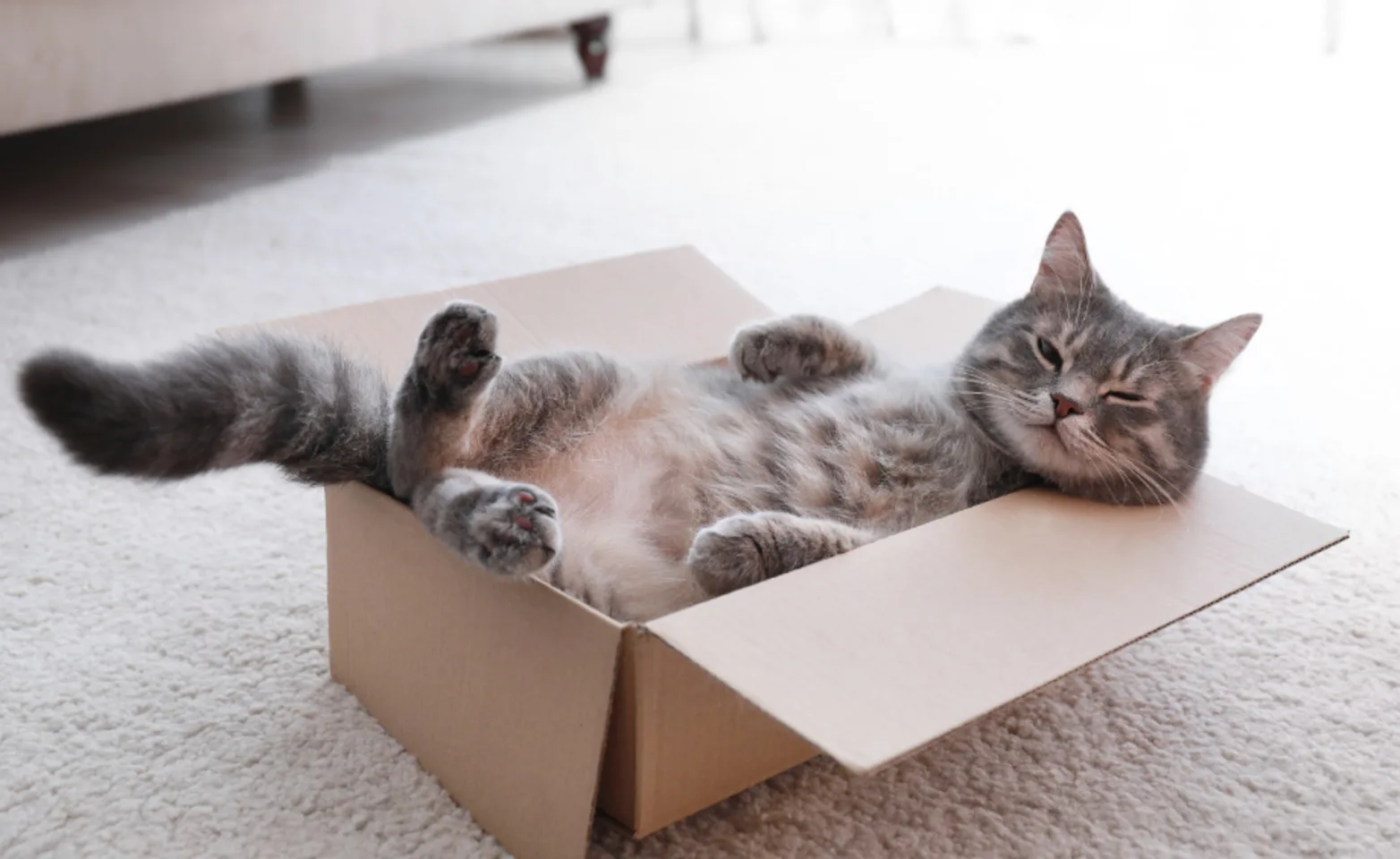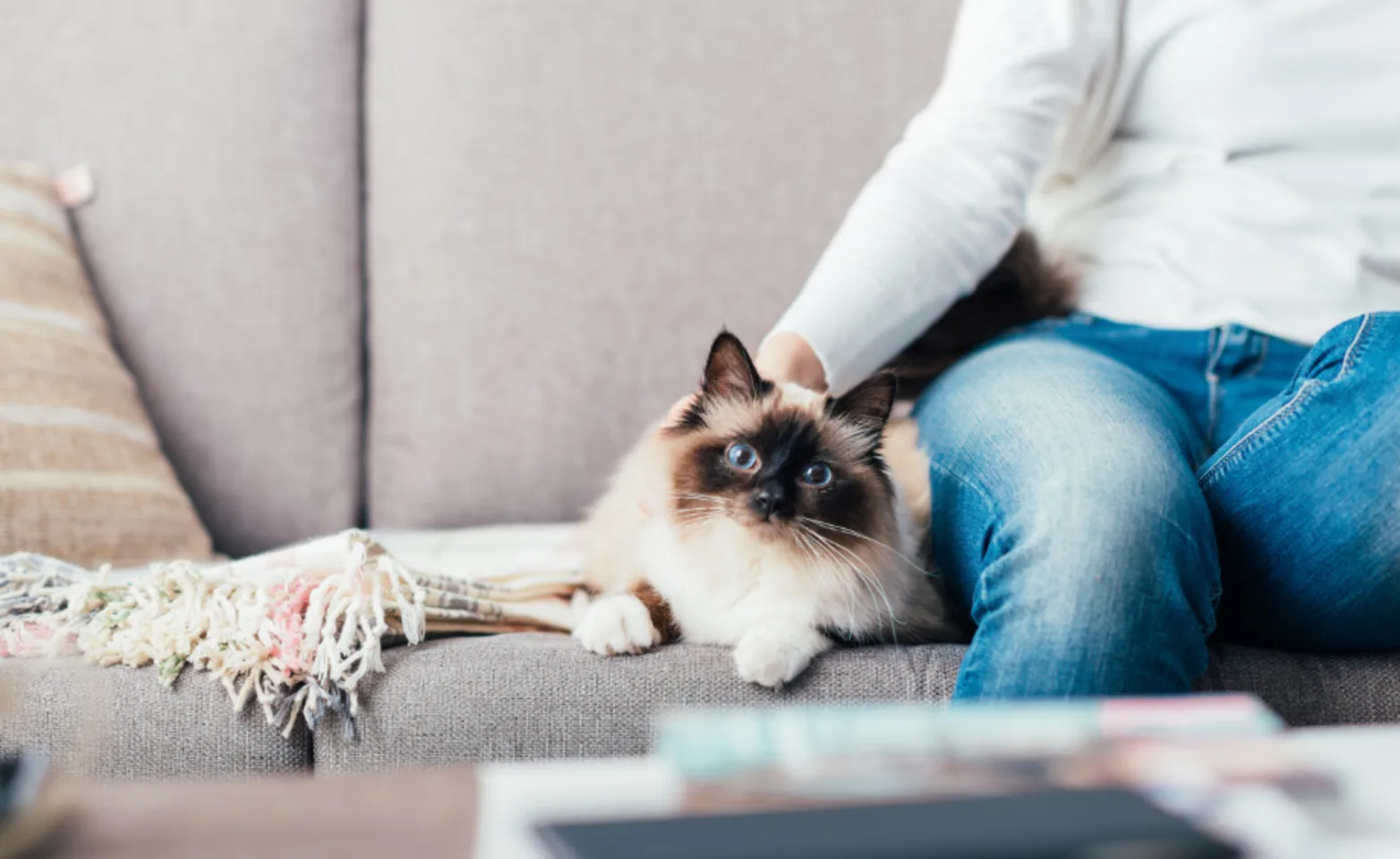The Paw Patch Place

Fear Free for Your Feline
Preparing for the Trip
Carriers
The optimal carrier for cats is sturdy with a removable top. Oftentimes, a full exam can be completed with your cat comfortably resting in the bottom half.
Make sure you have comfortable bedding in the crate to make your cat feel safe and relaxed. A non-slip mat is ideal for their comfort.
Keep your crate out at all times as part of your cat’s furniture, perhaps with the top off so they could use it as a bed. If it is not out at all times, bring it out at least two weeks prior to your planned veterinary visit.
Giving treats or providing meals in the crate can make it more comfortable. You may have to start their feeding near the crate, and gradually move it into the crate itself.
If your cat is hesitant to go inside, take the top off or place familiar smelling items in it such as a T-shirt from a favorite family member or favorite toys inside. Feliway spray or wipes can also add to the carrier’s attractiveness. Be sure to wait 10 to 15 minutes after spraying or wiping to allow the alcohol base to dissipate before placing your cat inside the sprayed carrier.
Here is a helpful video link for carriers and cats: Cats and Carriers: Friends, Not Foes
Remember cats don’t like surprises, so go slow and be patient. Stay calm, stay positive.
Cats respond better to praise than punishment or force. Using treats to reward desired behavior will create the calm you desire.
It is good to condition your kitty by taking him/her for short rides, then giving treats so they are accustomed to the car and crate
Give any prescribed anti-nausea or anti-anxiety supplements or medications as prescribed by your veterinarian. If your cat has had previous anxiety or fear issues when visiting the vet, let us know when scheduling the appointment so that we can figure out the best option for your pet.
Bring your cat in hungry because Fear Free certified veterinary team members will be handing out many small but delicious treats throughout the visit to welcome your pet, distract him from procedures and reward him for cooperation. Be sure to pack your cat’s favorite treats, especially if he is a picky eater!
You may also pack your cat’s favorite toys to make the visit more enjoyable.
Your cat should voluntarily go into a carrier or crate.
Cats should be resting comfortably in their carrier before being placed in the vehicle.
When transporting your cat in a carrier, minimize movement. If possible, support the carrier from the bottom, with one side resting against your chest, as if you are carrying a fragile gift. This helps your pet to feel more secure and ensures that he isn’t eye to eye with other animals as you walk into the lobby.
Bring all previous veterinary records to your first visit. Because of our individualized care, there are often procedures which do not need to be done. Previous records help us save your pet unnecessary treatment and you unnecessary cost, so don’t leave them on the kitchen counter!
Prepare the car so it promotes a calming environment.
Play calming music specially composed for cats, or pop in an audiobook.
Cool or warm the car to a comfortable temperature before putting your pet inside.
Carrier/crate is properly secured in the vehicle
Depending on your cat’s preferences, you might wait in the vehicle or in the lobby.
Nonslip surface in and under carrier/crate or on the car seat.
Place a pheromone-infused towel or blanket over the carrier, leaving one side uncovered for ventilation.
The floorboard behind the passenger seat is the most secure location for a small pet carrier.
Secure large crates or carriers to prevent sliding.
Avoid feeling rushed. If you are stressed, your pet will sense this and may become stressed.
To prevent carsickness, accelerate slowly from a stop, allow extra distance between other vehicles to prevent sudden braking, and take turns slowly.
Be matter of fact, and don’t speak to your pet in a sing-song voice. If you are calm, happy and relaxed, your pet will be too.

Entering the Hospital
Be sure your cat is secure in his carrier/crate with a towel covering the top.
Place the carrier/crate on the bench in the cat corner to minimize stress.
If an exam room is available, a receptionist will check you and your pet in right away.
Once in the exam room, allow your cat to explore his surroundings.

Entering the Exam Room
Place the carrier on the floor or bench and open the carrier door to allow your cat to come out.
Do not force your cat to come out of his carrier.
Cat-friendly music works a calming effect on the central nervous system.
Feliway pheromone diffusers emit a calming substance into the air.
Our exam tables have a soft blanket situated on top of a non-slip mat along with a heat pack for added comfort.
There is a poster in each exam room showing the subtle signs of fear you might be overlooking in your cat.
Fear Free certified veterinary team members will initially avoid eye contact with your pet and focus on you, instead. This helps your pet feel less stressed because he’s now the center of attention and gives him time to check out the environment and become accustomed to the team member’s presence.
Whenever possible, our Fear Free certified veterinary team members will perform exams and procedures right there in the exam room so your pet will be reassured by your presence and you can assist as needed, and you’ll have the assurance that he or she will be treated kindly and respectfully.
Remember: any stress or anxiety will travel from owner to pet. This may mean that your cat may be more comfortable away from you.
In addition to treats, our veterinary team members utilize a variety of distraction techniques such as toys to help your pet be comfortable.
We use smaller needles for vaccinations to make them as painless as possible.
Our veterinary team members will note your pet’s emotional response to the visit and what treats and techniques worked best to reduce any fear, anxiety, and stress that may have been expressed. This will help to make future visits even better.
If needed, we will prescribe anti-anxiety or other calming medications or supplements to help make future car rides and visits more enjoyable and less frightening for your pet.
